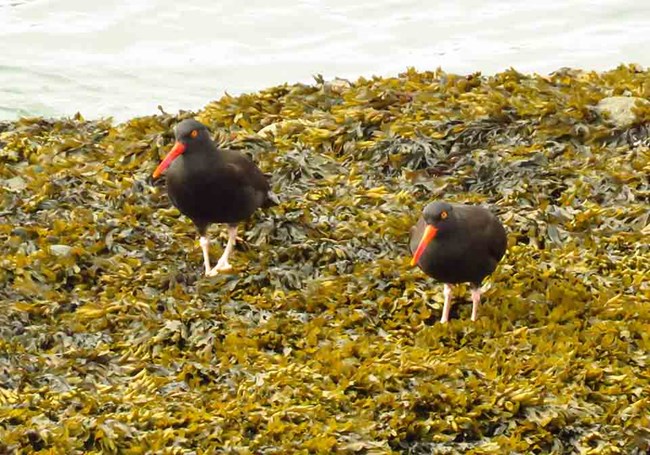
Because of their complete reliance on intertidal invertebrates as forage, Black Oystercatchers provide a unique opportunity to view the nearshore zone from the perspective of an avian predator. Our monitoring objective is to determine Black Oystercatcher nest density, nest occupancy rates, and size and species composition of prey brought back to the nest site to provision chicks. We monitor these attributes among sites within a park, among different regions in the Gulf of Alaska, and over time.
The sampling also allows the use of the recognized relations between Black Oystercatchers and their prey to draw inferences between oystercatcher populations and their prey populations. Specifically, the long-term sampling design will facilitate inferences relating density and productivity of oystercatchers to their diet (as reflected by prey brought to provision chicks) and to their prey populations.
We monitor Black Oystercatchers in Kenai Fjords National Park and Katmai National Park and Preserve. We also monitor them in Prince William Sound and Kachemak Bay, in partnership with Gulf Watch Alaska.
Contact: Heather Coletti
Learn more
Last updated: December 8, 2025
